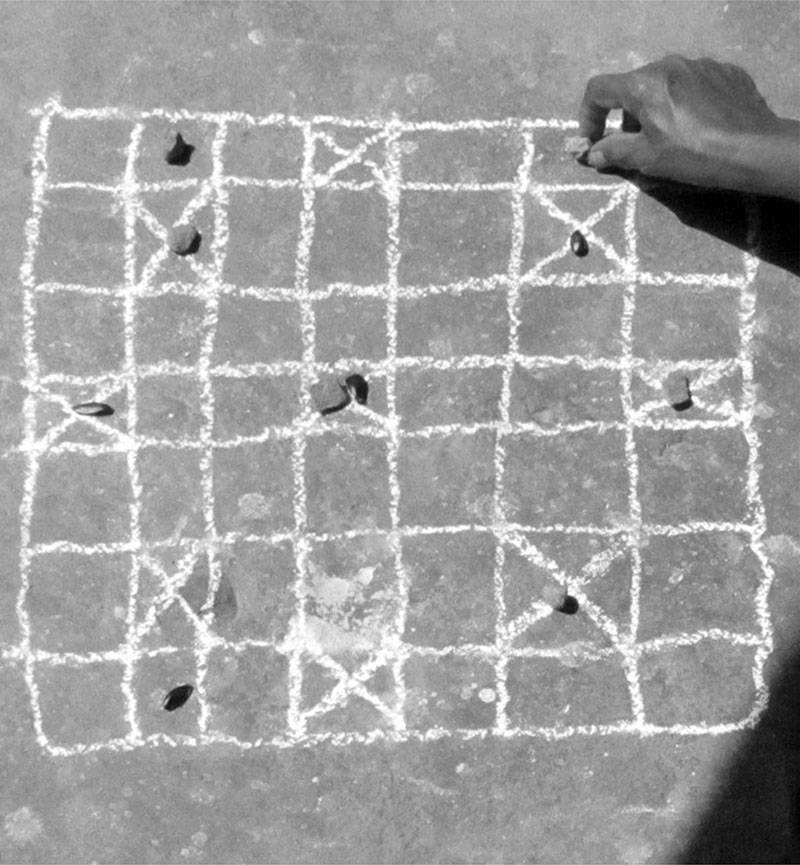A racing board game involving up to four players, Ashte Kashte was historically played in the state of Bengal. Due to its similarities with Pachisi, some scholars speculate that Ashte Kashte could be an older version of the latter. However, no evidence has been found to support such a theory and the origins of the game remain unclear.
Ashte Kashte is played on a square-shaped board that is seven tiles long on each side. Each player has four tokens and four cowrie shells are used as dice. The game begins with a throw of the shells, with the player with the highest score moving first. Each player starts from the middle tiles in the outermost rows, which are also called resting tiles. Tokens move in a counterclockwise spiral towards the centre of the board, and the first player to get all of their tokens to the centre wins the game.
Other games that have been compared to Ashte Kashte include Chaupar and Chowka Bara.







